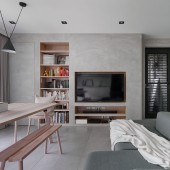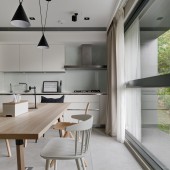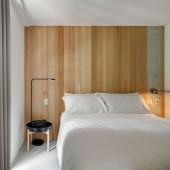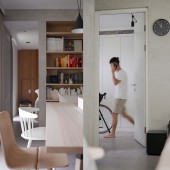
| THE AWARD |
| CATEGORIES |
| REGISTRATION |
| SUBMIT YOUR WORK |
| ENTRY INSTRUCTIONS |
| TERMS & CONDITIONS |
| PUBLICATIONS |
| DATES & FEES |
| METHODOLOGY |
| CONTACT |
| WINNERS |
| PRESS ROOM |
| GET INVOLVED |
| DESIGN PRIZE |
| DESIGN STORE |
| THE AWARD | JURY | CATEGORIES | REGISTRATION | PRESS | WINNERS | PUBLICATIONS | ENTRY INSTRUCTIONS |
About Enframed Residential House by Yi-Hsiang Cheng |
Home > Winners > Design #72614 >Interview |
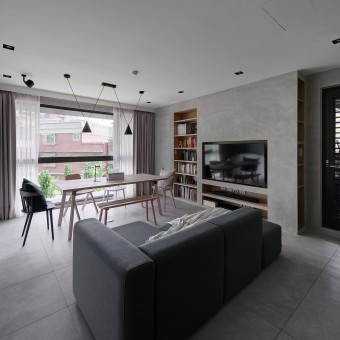 |
|
FS: What is the main principle, idea and inspiration behind your design?
YC: How to design and decorate interior but without meaningless or unnature stuff is a significant principle for design.
FS: What has been your main focus in designing this work? Especially what did you want to achieve?
YC: This studio dedicated to simplify design and develop materials.
FS: What are your future plans for this award winning design?
YC: We will constantly refine ourselves.
FS: How long did it take you to design this particular concept?
YC: About two months.
FS: Why did you design this particular concept? Was this design commissioned or did you decide to pursuit an inspiration?
YC: Because of the special site and city culture, we attempted to achieve the space to fit the environment.
FS: Is your design being produced or used by another company, or do you plan to sell or lease the production rights or do you intent to produce your work yourself?
YC: This design produced by ourselves.
FS: What made you design this particular type of work?
YC: We would like to define "home" to everyone.
FS: Where there any other designs and/or designers that helped the influence the design of your work?
YC: No
FS: Who is the target customer for his design?
YC: enough storage space in the limit area
FS: What sets this design apart from other similar or resembling concepts?
YC: In the beginning, initial measure and communication were important. Because of space limitation, any millimeter and line must be delicate.
FS: How did you come up with the name for this design? What does it mean?
YC: The view, owner's behavior, and furniture were the special points in the space, which were framed by the window, door or various rectangles.
FS: Which design tools did you use when you were working on this project?
YC: Accurate measuring
FS: What is the most unique aspect of your design?
YC: Material application
FS: Who did you collaborate with for this design? Did you work with people with technical / specialized skills?
YC: No
FS: What is the role of technology in this particular design?
YC: Lotos plaster, which uses Taiwan’s reservoir silt and construction remaining materials for basic,it can control humidity and absorb dust. In this case, we applied natural or creative materials to react to the exterior scenery.
FS: Is your design influenced by data or analytical research in any way? What kind of research did you conduct for making this design?
YC: There has a natural park right beside the site, which could hike and enjoy night view, become our research background. Local culture and habitation can be tracked through this way and provide the experiment to the project.
FS: What are some of the challenges you faced during the design/realization of your concept?
YC: The hardest part of this design was to break through limitation. How could we redesign and transform a certain space, but without many budgets was a challenge.
FS: How did you decide to submit your design to an international design competition?
YC: For Self-improvement
FS: What did you learn or how did you improve yourself during the designing of this work?
YC: Keep challenge and nonstop
FS: Any other things you would like to cover that have not been covered in these questions?
YC: No
FS: Thank you for providing us with this opportunity to interview you.
A' Design Award and Competitions grants rights to press members and bloggers to use parts of this interview. This interview is provided as it is; DesignPRWire and A' Design Award and Competitions cannot be held responsible for the answers given by participating designers.
| SOCIAL |
| + Add to Likes / Favorites | Send to My Email | Comment | View Press-Release |

